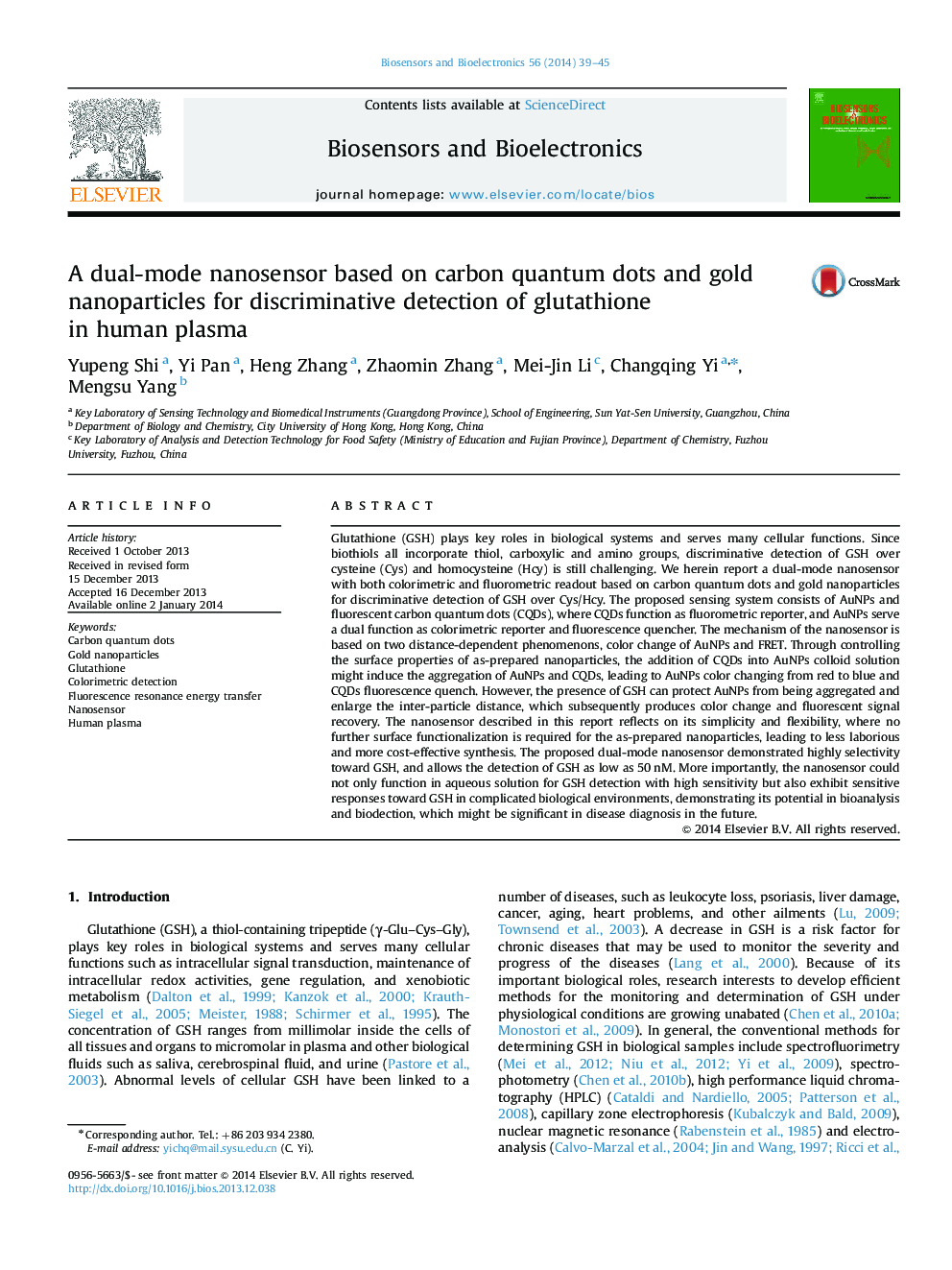| کد مقاله | کد نشریه | سال انتشار | مقاله انگلیسی | نسخه تمام متن |
|---|---|---|---|---|
| 866613 | 1470975 | 2014 | 7 صفحه PDF | دانلود رایگان |
●A dual-mode nanosensor for discriminative GSH detection with high sensitivity.●The nanosensor consists of AuNPs and fluorescent CQDs.●Color change of AuNPs and FRET form the basis of the nanosensor.●The label-free nanosensor is simple and flexible.●The nanosensor could function in complicated biological fluids.
Glutathione (GSH) plays key roles in biological systems and serves many cellular functions. Since biothiols all incorporate thiol, carboxylic and amino groups, discriminative detection of GSH over cysteine (Cys) and homocysteine (Hcy) is still challenging. We herein report a dual-mode nanosensor with both colorimetric and fluorometric readout based on carbon quantum dots and gold nanoparticles for discriminative detection of GSH over Cys/Hcy. The proposed sensing system consists of AuNPs and fluorescent carbon quantum dots (CQDs), where CQDs function as fluorometric reporter, and AuNPs serve a dual function as colorimetric reporter and fluorescence quencher. The mechanism of the nanosensor is based on two distance-dependent phenomenons, color change of AuNPs and FRET. Through controlling the surface properties of as-prepared nanoparticles, the addition of CQDs into AuNPs colloid solution might induce the aggregation of AuNPs and CQDs, leading to AuNPs color changing from red to blue and CQDs fluorescence quench. However, the presence of GSH can protect AuNPs from being aggregated and enlarge the inter-particle distance, which subsequently produces color change and fluorescent signal recovery. The nanosensor described in this report reflects on its simplicity and flexibility, where no further surface functionalization is required for the as-prepared nanoparticles, leading to less laborious and more cost-effective synthesis. The proposed dual-mode nanosensor demonstrated highly selectivity toward GSH, and allows the detection of GSH as low as 50 nM. More importantly, the nanosensor could not only function in aqueous solution for GSH detection with high sensitivity but also exhibit sensitive responses toward GSH in complicated biological environments, demonstrating its potential in bioanalysis and biodection, which might be significant in disease diagnosis in the future.
Journal: Biosensors and Bioelectronics - Volume 56, 15 June 2014, Pages 39–45
